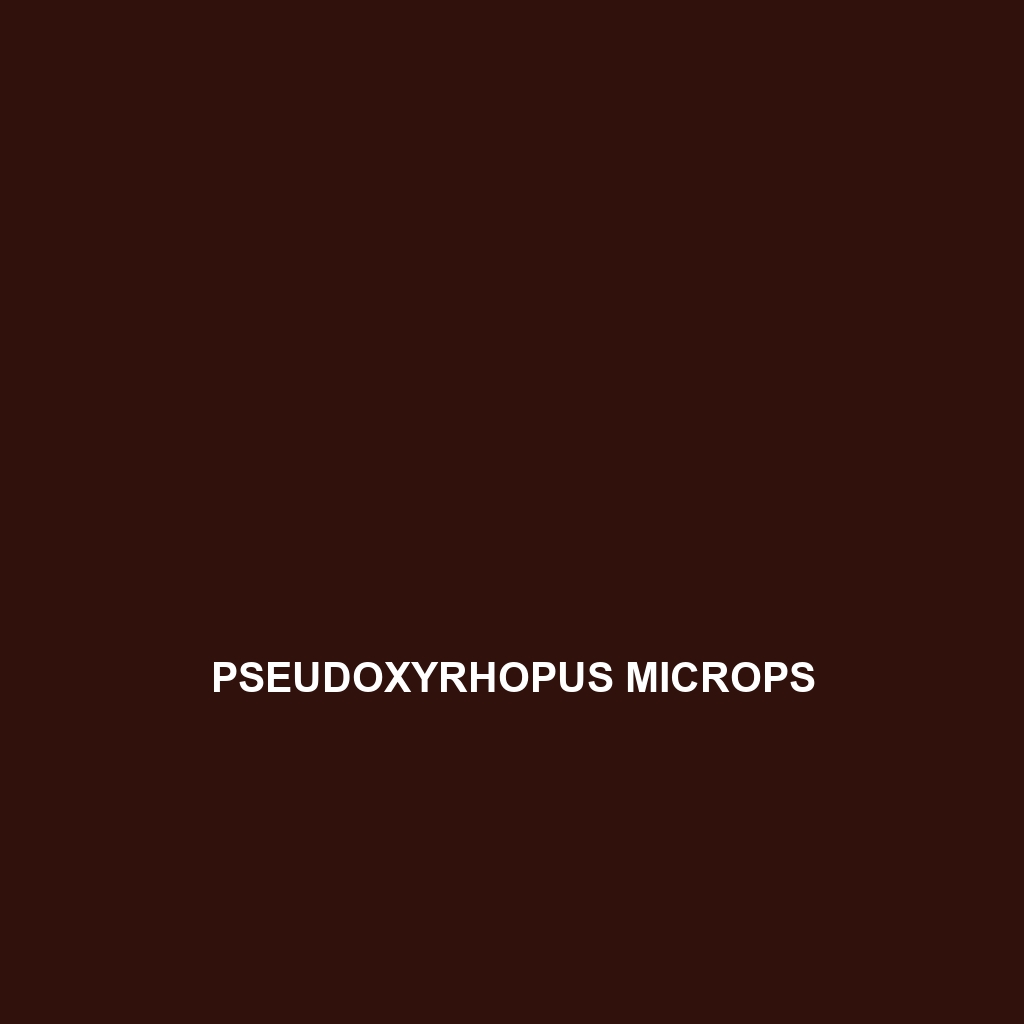Common Name
Pseudoxyrhopus microps
Scientific Name
Pseudoxyrhopus microps
Habitat
Pseudoxyrhopus microps is primarily found in the lush environments of Madagascar, particularly within its rainforests. This species prefers regions with high humidity and dense vegetation, where it can easily conceal itself from predators. The ecological scope spans across temperate forests and tropical rainforests, characterized by their rich biodiversity and complex ecological interactions. Due to Madagascar’s unique climatic conditions, including warm temperatures and seasonal rainfall, Pseudoxyrhopus microps‘s habitat provides an ideal setting for its survival and reproduction. Additionally, this snake may also inhabit areas adjacent to human settlements, adapting to varying environmental demands while maintaining its survival instincts.
Physical Characteristics
Pseudoxyrhopus microps exhibits distinct physical traits that set it apart in the serpentine world. This species usually reaches an impressive length of approximately 60 to 100 cm, displaying a slender, elongated body that enhances its ability to navigate through dense foliage. The coloration generally ranges from a dark brown to olive green, adorned with lighter banding or speckles that enable effective camouflage against the forest floor. A notable feature of this species is its finely pointed snout, which aids in burrowing and accessing prey beneath leaf litter. Its smooth scales contribute to its hydrodynamic shape, allowing for swift movements through its native habitat and enhancing its predatory capabilities.
Behavior
The behavior of Pseudoxyrhopus microps is intriguing and reveals much about its adaptability and ecological niche. This species is predominantly nocturnal, taking advantage of the cover of darkness to hunt. Its diet primarily consists of various insect species, which it actively seeks out during its nighttime forays. Mating rituals typically occur in the wet season, where males engage in elaborate courtship displays that may include intricate body movements to attract females. Social interactions are typically limited to mating, as Pseudoxyrhopus microps is relatively solitary, employing a stealthy approach in both hunting and avoiding predators.
Diet
Reproduction
The reproductive cycle of Pseudoxyrhopus microps is fascinating and reflective of its ecological conditions. Mating typically takes place during the rainy season, with females demonstrating a preference for larger males during courtship rituals. Following successful mating, the female lays approximately 5 to 12 eggs, which she deposits in a safe, concealed location in the leaf litter. The incubation period lasts around 60 to 80 days, after which the hatchlings emerge, fully independent from the moment they are born. Parental care is minimal, as Pseudoxyrhopus microps does not exhibit protective behaviors towards its offspring, relying on their natural instincts for survival.
Conservation Status
The conservation status of Pseudoxyrhopus microps remains a topic of concern. Currently categorized as ‘Least Concern,’ various factors pose potential threats to its habitat, including deforestation and habitat destruction due to agricultural expansion. Conservation efforts are crucial in maintaining its population, especially in Madagascar, where unique ecosystems are increasingly under threat. Initiatives focused on habitat preservation and awareness are in progress to combat these challenges, but continued efforts are necessary to ensure long-term survival of this species.
Interesting Facts
One of the most interesting aspects of Pseudoxyrhopus microps is its unique adaptability to its environment. This species has evolved to have impressive agility, allowing it to navigate through complex terrains of the rainforest with ease. Furthermore, its ability to blend seamlessly into its surroundings not only serves as a defense mechanism but also enhances its predatory skills. Unlike many reptiles, this species has shown behaviors akin to some social dynamics among individuals during the mating season, sparking interest among researchers regarding its social structure.
Role in Ecosystem
Pseudoxyrhopus microps plays a significant role in maintaining the ecological balance of its habitat. As an insectivore, it contributes to controlling the population of insect species, preventing outbreaks that could destabilize the ecosystem. Its presence in the food web also links it as a prey item for larger predators, thereby supporting the ecological dynamics of predators and prey. By participating in this intricate network, Pseudoxyrhopus microps demonstrates the significance of even the smallest species in contributing to ecosystem health and resilience.
